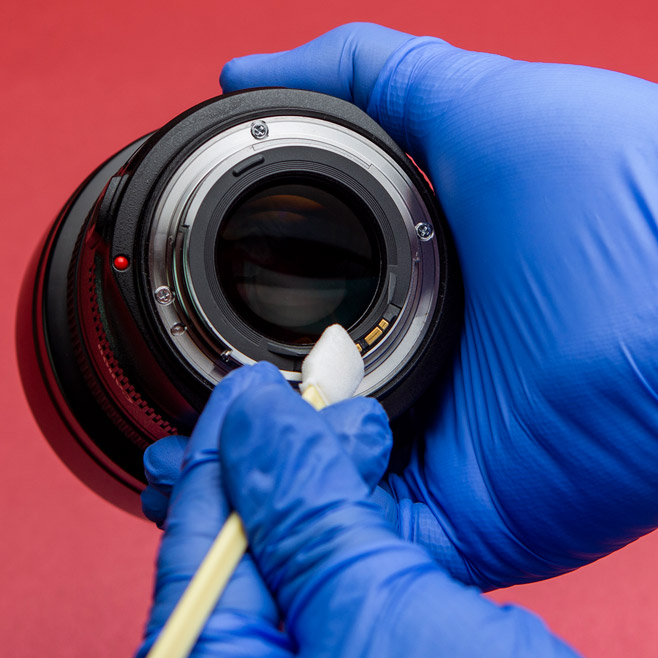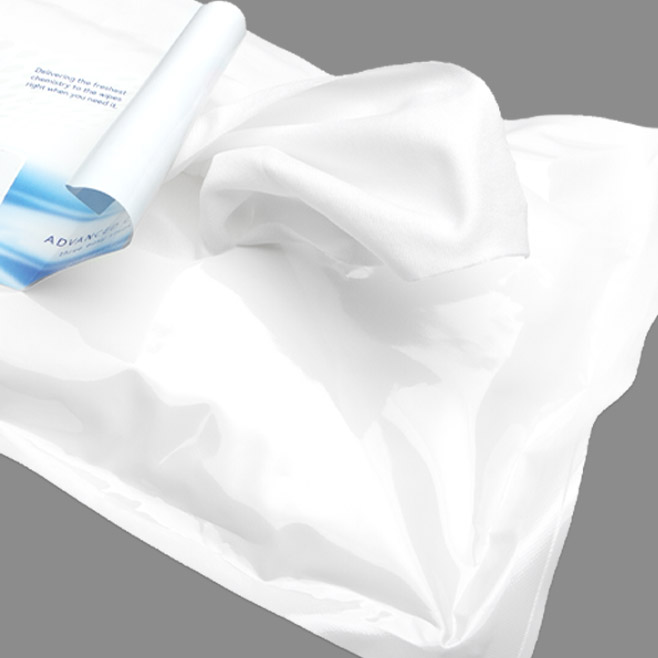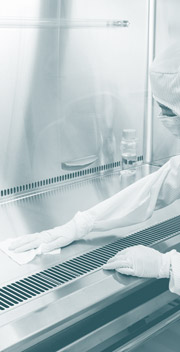Cleanroom News, FDA, Hospitals
How Cleanroom Technology is Rescuing our Blood Supplies

Lab Grown Blood
Throughout human history, we have searched for ways to prolong our lives. Whether it be through cleaner living, exercise, scientific advancement, or improved diet, humans are a species in perpetual search for an elixir of life, a fountain of eternal youth. And this impulse makes it into our history and cultural mythos in myriad forms, some of which are – shall we say, healthier – than others. Interestingly, the focus of this drive to longevity or even immortality has, at times, centered on a bodily component we all share – our blood. From ancient medical blood-letting techniques to ‘balance the humors’ to the narrative of those imbibing it (Vlad III, Prince of Wallachia aka ‘Vlad the Impaler’ and ‘Vlad Tepes’ immediately springs to mind), blood has played a central role for those resisting mortality. And Vlad Tepes, the real-life inspiration for Bram Stoker’s classic novel, Dracula, is not the only historical figure to have adopted such measures. Elizabeth Báthory, the lesser known Transylvanian Countess whose family ruled the region in the latter half of the sixteenth century, reputedly used human blood to preserve her looks and youth. Whether this is history or myth, it speaks to the potency – both literal and metaphorical – of a fluid that is critical to our life support system. And it is the one thing that is common to us regardless of color, creed, heritage, class, gender, or status. It is a marker of our humanity – after all, as Shakespeare’s character Shylock exclaimed in The Merchant of Venice: ‘If you prick us, do we not bleed?’(1)
But it is also one thing that in these times of natural disaster, pandemic, and social unrest is increasingly in short supply. According to an article in the New York Times, ‘[s]everal months of social distancing and stay-at-home orders have resulted in fewer people donating blood, according to health care workers, with collection drives at offices, schools and churches canceled en masse.’(2) The estimated decline in inventory, according to Chris Hrouda of the American Red Cross, is around 50%, which is particularly concerning to those who foresee another potential disaster in the making. While encouraging donors to venture out on the altruistic mission of giving blood is not without difficulty, it is currently the main approach to refilling the nation’s supply. In a press release earlier this year, the American Red Cross stated that it ‘continues to encourage healthy individuals to schedule and keep donation appointments in the weeks ahead to ensure a stable supply throughout this pandemic. Each Red Cross blood drive and donation center follows the highest standards of safety and infection control, and additional precautions have been implemented to ensure the health of Red Cross donors, employees and volunteers. Blood donation is essential to ensuring the health of our communities. The need for blood is constant, and volunteer donors are the only source of blood for those in need. With no known end date in this fight against coronavirus, the Red Cross needs the help of donors and blood drive hosts to maintain a sufficient blood supply for weeks to come.’ It adds that ‘[t]his is the time to take care of one another.’(3) Furthermore, it might also be a time to appreciate the critical role of something we unquestioningly take for granted. How much do we even know about the substance? What is its composition? And is there a way to engineer it outside of the human body? Let’s take a closer look…
The fluid we refer to as blood is comprised of two distinct parts – the ‘formed elements’ and the plasma. Plasma is a watery substance in which proteins, electrolytes, minerals, and fats are dissolved and it represents around 55% by volume. The remainder of the substance – the so-called formed elements – are created from hematopoietic stem cells (HSCs) in the bone marrow. According to the National Institutes of Health (NIH), these blood stem cells can ‘differentiate to a variety of specialized cells, can mobilize out of the bone marrow into circulating blood, and can undergo programmed cell death, called apoptosis—a process by which cells that are detrimental or unneeded self-destruct.’(4) As they are created, the formed elements are divided into three different classes: erythrocytes, leukocytes, and thrombocytes, each with a different form and function.
Erythrocytes, the red blood cells (RBCs), are the most numerous of the mix, their biconcave form providing maximum surface area for the diffusion of gases as they transport oxygen (and to a lesser extent carbon dioxide) around the body via the capillaries. RBCs do not have a nucleus but are, instead, filled with hemoglobin, a molecule that traps and releases oxygen. These are the cells that most readily spring to mind when we think of ‘blood,’ but represent only one part of the whole.
White blood cells (WBCs), or leukocytes, have many more functions than their rosy-colored cousins, which may make them inherently more complex. From secreting histamine and heparin, to producing antibodies, to waging war on foreign cells and cleaning up the battlefield, leukocytes use a process termed diapedesis to permeate the tissues through capillary walls. Leukocytes are sub-divided into two main groups – granulocytes and agranulocytes – depending on whether they develop granules in a cell’s cytoplasm or not. The most common granulocyte is the phagocytic neutrophil (a killer of foreign microorganisms) and the most common agranularcyte is the lymphocyte, which plays a role within the immune system.
And when you thought that blood composition and chemistry could not get more enthralling, there are also the thrombocytes to consider. Commonly known as ‘platelets,’ thrombocytes are actually not complete cells but rather fragments of large megakaryocytes which develop in the bone marrow. Platelets are by nature convivial and enjoy joining together in large groups to reinforce damage within blood vessels and to initiate the formation of blood clots.
So apart from being info geeks, why have we gone into this detail regarding blood composition? The answer is simple: blood is a complex substance that is often underestimated due to the fact that we produce it naturally within our own bodies. However, it does present unique challenges in terms of its synthesis under laboratory conditions as Japanese platelet producer, Megakaryon, has discovered. In a dedicated cleanroom at its Kyoto Development Center, the company engages in the commercial production of platelets in processes in which ‘meticulous quality control measures are carried out in compliance with the Good Manufacturing Practices (GMP). GMP follow the requirements set by the Ministerial Ordinance on Standards for Manufacturing Control and Quality Control for Drugs and Quasi-drugs.’(5) And the requirements call for a full spectrum of personal protective equipment, or PPE, when dealing with blood products – from basic bunny suits to HEPA filtration to biological safety cabinets – enclosed laboratory gloveboxes that can provide up to Level 4 safety protection. And this level of PPE is necessary not only for the protection of the personnel and the environment but also for the product itself as, in the case of blood products, protecting raw materials is a source of some concern.
As we noted above, in their critical role as coagulant agents platelets are used extensively in surgical settings. But outside of the body their viability is limited to just four days, a challenge that Megakaryon is embracing. Having developed techniques to create platelets from induced pluripotent (iPS) cells, the company is also researching ways in which to mass manufacture semi-custom cells. What do we mean by this? In the same way that blood is antigen ‘typed’ as A, B, AB, or O, white blood cells are similarly typed. When patients receive repeated blood transfusions, although the red blood cell type can be regulated, the human leukocyte antigens (HLAs) present in a transfusion may not be compatible with the patient’s own white blood cells. If this occurs, an antibody response is initiated leading to a patient developing HLA cross-reactivity. Ideally, the best preventative against HLA cross-reactivity is to trace an HLA-matched donor but the statistical probability of finding one is low. Moreover, for each transfusion between 200 – 300 billion white cells are required to produce just one dose of platelets – a significantly large investment for a single transfusion but one which Megakaryon is hoping to address in its ‘stable production of safe and low-cost platelets.’(6) Safe and low-cost, hmmm…
Returning now to the bigger picture of lab-produced blood, the field is dominated by two areas of research: Perfluorocarbons (PFCs) and Hemoglobin-Based Oxygen Carriers (HBOCs).
According to the Pacific Heart, Lung, And Blood Institute, a 501(c)(3) organization based in Los Angeles, CA, PFCs are the first generation of artificial blood products and have undergone the most extensive research. Chemically inert, they are the product of fluorine- and carbon-containing substances and are even more effective than plasma in conveying oxygen from the lungs to the tissues. From the time of transfusion their life expectancy within the body is around 48 hours, after which additional transfusions should be administered. However, although all of this sounds good, the Institute notes that of the five PFCs it lists only one has been approved for use, and that approval is restricted to Mexico and Russia.
HBOCs, however, seem to show more promise. Manufactured as the universally compatible blood type O negative, they are sterilized to kill both viruses and bacteria, can be stored for 12-36 months without refrigeration, and are unlikely to provoke an immunological response in a patient. Oxyglobin is an example of an HBOC that has been approved specifically for veterinary use by both the Food and Drug Administration (FDA) and the European Commission in the treatment protocols for canine anemia. While not a cure in itself, it is used to provide ‘temporary metabolic support necessary while the patient is treated for the cause of the anemia.’(6) As a ‘shelf-stable’ product, Oxyglobin requires no crossmatching as it is can be given intravenously to any dog regardless of blood type. Similarly, for anemic human patients, Hemopure is an HBOC that is compatible with all blood types. Derived from purified, glutaraldehyde-polymerized, bovine hemoglobin (Hb) the product is shelf-stable for up to three years, and ‘[o]n a gram-for-gram basis, Hemopure was calculated to be approximately three times more potent than stored or fresh red blood cell hemoglobin at restoring baseline tissue oxygenation following severe acute anemia.’(7) Manufactured for use in sterile, flexible infusion bags to be administered through any standard IV line, the product might appear to represent an ideal alternative to allogeneic red blood cells and has long been approved for use in South Africa. Here in the US, however, FDA approval has been unforthcoming. According to the manufacturer, HbO2 Therapeutics, a company based in Souderton, PA, Hemopure is considered ‘an investigational new drug […] not approved by the FDA as being safe or effective for any use in humans, and therefore only available through a clinical trial, or expanded access (sometimes called compassionate use).’(8)
In the face of the nation’s ongoing shortage of ‘real’ blood, however, this current restriction could become contentious.
According the FDA literature, ‘expanded access’ (also known as ‘compassionate use’) is considered to be ‘a potential pathway for a patient with an immediately life-threatening condition or serious disease or condition to gain access to an investigational medical product (drug, biologic, or medical device) for treatment outside of clinical trials when no comparable or satisfactory alternative therapy options are available.’(9) This definition assumes that the potential benefits to the patient outweigh potential risks given the severity of the condition, that clinical trial enrollment is not possible, and that no alternative therapy is available. The program gained significant traction following pressure from those involved in the care and treatment of terminal HIV/AIDS patients in the late 1980s and built upon Abigail Alliance v. von Eschenbach, a legal case that sought to make available experimental medications to those without other therapeutic options.
So how does expanded access work? Firstly, a physician must agree that no other treatment options exist and that there are demonstrable potential benefits for the patient. The FDA must then be assured that access by the patient to the medication will not jeopardize any on-going or future trials of the substance. Thereafter, assuming a manufacturer sponsors the supply of the drug, a clinical protocol is submitted to the FDA. This treatment plan outlines how the drug will be used and also the guardrails to be put in place, including safety protocols such as Hazard Analysis and Critical Control Points (HACCP) protocols and cGMPs, already instituted by the manufacturer. In short, this is not a simple process to navigate and many hurdles are set before patients and their care teams seeking to access these ‘experimental’ treatments.
So it will be interesting to chart the ways in which protocols around granting permission for compassionate use will change given the current global situation. With COVID-19 still rampant in the US, the increasing shortage of blood stocks, and the on-going reluctance of donors to risk entering into the public space in order to donate, it might well be that if there were ever a time for the FDA to review the need compel physicians to jump through regulatory hoops to offer patients a ‘Hail Mary pass’ it might be right now. We will continue to watch for any developments in this situation, especially if the impending crisis feared by the American Red Cross does indeed come to pass. It is said that 2020 will go down in history as being the year that all things became possible – no crisis was too small, no danger too surmountable. Let us hope that our blood supply can be protected by the technology and research developed in globally in our cleanroom environments.
Have you ever heard of artificial blood? Is the American Red Cross press briefing of concern to you? We’d love to know your thoughts.
References:
- Shakespeare, William The Merchant of Venice, Act III, scene I.
- https://www.nytimes.com/2020/06/02/climate/blood-donations-hospitals-shortage.html
- https://www.redcross.org/local/georgia/about-us/news-and-events/press-releases/red-cross-encourages-blood-donors-to-make-and-keep-donation-appo.html
- https://stemcells.nih.gov/info/2001report/chapter5.htm
- http://www.megakaryon.com/en/technology/
- ibid
- https://www.hbo2therapeutics.com/copy-of-manufacturing
- https://www.hbo2therapeutics.com/our-product
- ibid
- https://www.fda.gov/news-events/public-health-focus/expanded-access




















HAVE AN IDEA FOR CONTENT?
We are always looking for ideas and topics to write about.
Contact Us